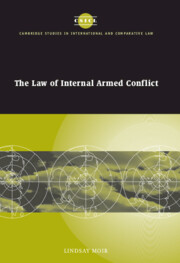


It does not, however, permit the taking of measures that would otherwise be prohibited under IHL. The principle of humanity forbids the infliction of all suffering, injury or destruction not necessary for achieving the legitimate purpose of a conflict. the complete or partial submission of the enemy at the earliest possible moment with the minimum expenditure of life and resources. These two principles shape all its rules. The principle of military necessity permits only that degree and kind of force required to achieve the legitimate purpose of a conflict, i.e. IHL is a compromise between two underlying principles, of humanity and of military necessity. With the adoption of the Protocols of 8 June 1977 additional to the Geneva Conventions, which combine both branches, that distinction has become a matter of historical and scholarly interest.

These two branches of IHL draw their names from the cities where they were initially codified. the 'law of The Hague', which is the body of rules establishing the rights and obligations of belligerents in the conduct of hostilities, and which limits means and methods of warfare.the 'law of Geneva', which is the body of rules that protects victims of armed conflict, such as military personnel who are hors de combat and civilians who are not or are no longer directly participating in hostilities.GENEVA AND THE HAGUE IHL has two branches: The ICRC, international organizations, universities and States tend to favour 'international humanitarian law' (or 'humanitarian law'). The terms 'international humanitarian law', 'law of armed conflict' and 'law of war' may be regarded as synonymous.


 0 kommentar(er)
0 kommentar(er)
